Cannabis,Hemp ေဆးေျခာက္ပင္ရဲ႕ ေလ ွ်ာ္နဲ႔ ယက္တဲ့ ရဝမ္တိုင္းရင္းသားေတြရဲ႕ ရိုးရာ က်န္းမာေရးခ်ည္ထည္
ေတာင္သူေတြအတြက္ ပိုက္ဆံသစ္ပင္ The Money Tree (or) HEMP
လ်င္ျမန္စြာျဖစ္ေပ်ာ္တိုးတက္လ်က္ရိွေသာယေန႔ကမၻာႀကီးဟာ လူသားတို႔ရဲ႕တီထြင္ဖန္တ္းမႈေတြေၾကာင့္ပဲ ေရာဂါရရၿပီး လူသားေတြကပဲ တီထြင္ဖန္တီးမႈေတြနဲ႔တဖန္ျပန္လည္ကုစားေနကပါတယ္
ဟုတ္ပါတယ္ မ်က္ေမွာက္ကာလမွာ အသုံးျပဳေနၾကတဲ့ လူသုံးကုန္ပစၥည္းေတြမွာ သဘာဝပတ္ဝန္းက်င္ကိုပ်က္စီးေစႏိုင္တဲ့အသုံးအေဆာင္ပစၥည္းေတြကအမ်ားျကီးပါ ဒါေတြကိုသဘာဝကထုတ္လုပ္တဲ့ထုတ္ကုန္ေတြနဲ႔အစားထိုးဖ္ု႔ကိုလည္း လူေတြဟာျပင္းျပင္းထန္ထန္ႀကိဳးစားအားထုတ္ၾကတာကိုေတြ႔ရပါမယ္။
ယခုအခါမွာ Hemp လို႔ေခၚၿပီး သဘာဝပတ္ဝန္းက်င္ကိုမပ်က္စီးမထိခိုက္ေစတဲ့ လူသုံးကုန္ပစၥည္းအေျမာက္အမ်ားကိုလည္းထုတ္လုပ္ႏိုင္မည့္ဆးေျခာက္အမ်ိဳးအႏြယ္အပင္မ်ားကို လဘ္ျမင္တဲ့တိုင္းျပည္တစ္ခ်ိဳ႕ဟာစတင္စိုက္ပ်ိဳးထုတ္လုပ္ေနၾကၿပီျဖစ္ပါတယ္။
Hemp ဟာ Marijuana or Cannabis (ေဆးေျခာက္ပင္)ကေနဆင္းသက္လာတဲ့မ်ိဳးႏြယ္ျဖစ္ၿပီး သူ႔မွာယစ္မူးေစတတ္တဲ့အာနိသင္ပါဝင္မွအလြန္နဲပါးလို႔ (0.3% ေအာက္) ယစ္မူးေစျခင္းလုံးဝမရိွပါ။သူ႔ရဲ႕ အ႐ိုး အရြက္နဲ႔အေစ့ေတြဟာ ကုန္ထုတ္လုပ္မႈအတြက္အရမ္းအသုံးဝင္တာလည္းေလ့လာသိရိွရပါတယ္ Hemp ပင္ရဲ႕အ႐ိုးေတြထဲမွာ ခ်ည္မ်ွင္ထုတ္လုပ္ႏိုင္တဲ့ fiber ဓါတ္80% ပါဝင္တာေၾကာင့္ အျခားေသာခ်ည္မ်ွင္ရက္လုပ္ႏိုင္သည့္ ေလ်ွာ္ပင္ ဝါပင္မ်ားထက္ fiber ပါဝင္မႈပိုမ်ားတာသိရပါတယ္။
Hemp fiber ထုတ္ယူႏိုင္ဖို႔အတြက္ Hempေတြစိုက္ပ်ိဳးေရးဟာလည္း အျခားစီးႏွံစိုက္ပ်ိဳးမႈေတြလိုအလုပ္လုံးဝမ႐ွပ္ပါဘူး သာမာန္ေျမျပင္ထြန္ယက္ မ်ိဴးၾကဲပက္ကာ ၄လ ၾကာထားစိုက္ၿပီးရိတ္သိမ္း႐ုံပါပဲ Hemp စိုက္ခင္းေတြဖို႔ ေရမလိုပါဘူး ဓါတ္ေျမၾသဇာ ေပါင္းသတ္ေဆးပိုးသတ္ေဆး မိႈသတ္ေဆး အပင္အားေဆး လို႔ေခၚတဲ့ ေတာင္သူဘြဖ်က္ေဆးဝါးေတြဘာတစ္ခုမွကိုအသုံးျပဳစရာမလိုတဲ့ Hemp စိုက္ပ်ိဳးေရးပါ ေနာက္ၿပီးေတာ့ Hemp ပင္ေတြဟာေျမမေရြးပါဘူးHemp ကိုအမ်ားအားျဖင့္ ေဆာင္းတြင္းနဲ႔ေႏြတြင္းမွာစိုက္ပ်ိဳးၾကပါတယ္။
Hemp
စိုက္ပ်ိဳးျခင္းဟာ ယေန႔ကမာၻတစ္ဝန္းလံုးမွာ စီးပြားေရးအရ အက်ိဳးအျမတ္ အျဖစ္ထြန္းဆံုး စိုက္ပ်ိဳးေရးျဖစ္ပါတယ္။
ျမန္မာႏိုင္ငံရဲ႕ေနရာေဒသမေရြး စိုက္ပ်ိဳးလို႔ ေကာင္းတဲ့အေျခအေနမ်ိဳး ရွိပါတယ္။အခ်ိန္သုံးလသာစိုက္ပ်ိဳးရျပီး တစ္ႏွစ္လ်ွင္၂ ႀကိမ္ (ေလ်ွာ္/အေစ့) စိုက္ပ်္ဳးလို႔ရပါတယ္။
စက္မႈေလ်ွာ္ပင္ Hemp ကိုအေစ့အတြက္တစ္ဧကစိုက္မယ္ဆိုရင္ အေလးခ်ိန္ ၃တန္ရိွတဲ့ပ႐ိုတင္း ၈၀%ျပည့္ဝတဲ့ Hemp seeds ေတြကိုရပါတယ္ (စိုက္ခ်ိန္ - ေအာက္တိုဘာ ႏိုဝင္ဘာ ဒီဇင္ဘာ)
ေလ်ွာ္အတြက္စိုက္မယ္ဆိုရင္တစ္ဧကလ်ွင္ေလ်ွာ္မ်ွင္အေျခာက္ ၃ တန္ကေန ၆ တန္ထြက္ပါမယ္ သဘာဝကေပးတဲ့ အခိုင္ဆံုးအမွ်င္တမ်ဳိး ျဖစ္ၿပီးေတာ့ နည္းလမ္း (၅၀,၀၀၀) ေက်ာ္ အသံုးျပဳလို႔ရပါတယ္။(စိုက္ခ်ိန္ ဇြန္ ဇူလိုင္ ႀသဂုတ္)
ဒါဟာ သာမာန္ေလွ်ာ္မွ်င္ပင္ေတြထက္ (၄) ဆေလာက္ သာပါတယ္။ စိုက္ပ်ဳိးရာတြင္လည္း ပိုးသတ္ေဆးတို႔ ေျမဩဇာတို႔ သံုးဖို႔ မလိုပါဘူး။ေတာင္သူေတြအတြက္စိုက္ပ်ိဳးစားရိတ္သက္သာေစမယ့္အခ်က္ပါပဲ။
စိုက္ပ်ိဳးၿပီးရရိွလာတဲ့ Hemp ပင္ေတြကို ရိတ္သိမ္းခ်ိန္က် ရိတ္ေႁခြစက္မ်ားျဖင့္ အေစ့ေတြကိုေႁခြယူၿပီးအပင္အ႐ိုးတံေတြကိုရိတ္လွဲယူၾကပါတယ္။
Organic Hemp Seeds
Hemp တစ္ဧကစိုက္ပ်ိဳးျခင္းဟာ အာဟာရျပည့္အေစ့သုံးတန္ကို႐ွိေစပါတယ္ ႐ွိလာတဲ့အေစ့သုံးတန္ကိုစားသုံးဆီအျဖစ္ျပန္လည္ႀကိတ္ခြဲပါကေဆးဖက္ဝင္သဘာဝဆီဂါလံ ၃၀၀ ကိုထြက္ေစမွာလည္းျဖစ္ပါတယ္။ ထိုအေစ့ေတြမွာပရိုတင္း ၅၀% မွ ၈၀% ထိပါဝင္ႏိုင္ျပီးအာဟာရအဆင့္ omega 3 - 6 ျဖစ္ပါတယ္။
အေစ့ကေနထုတ္ယူအသုံးျပဳႏိုင္တာေတြကေတာ့ စားဆီေဆးဖက္ဝင္ဆီ(CBD) အလွဆီမ်ား သဘာဝ အလွကုန္ပစၥည္းမ်ား ဆပ္ျပာ အာဟာရမႈန္႔မ်ား အာဟာရျမင့္အစားအစာမ်ား ဖေယာင္း ပလက္စတစ္တို႔ပဲျဖစ္ပါတယ္။
Hemp Fabric
သူကေနခ်ည္မ်ွင္ကုန္ၾကမ္းအျဖစ္ထုတ္လုပ္ဖို႔အသုံးျပဳရမယ့္ Hemp Raw Material Industry ကေတာ့အႀကီးအမားႀကီးမဟုတ္ပါဘူး ဆန္စက္တစ္ခုသာသာပါပဲ အရင္းအႏွီးလည္းသိပ္မႀကီးမားလွပါဘူး။
Hemp ကထုတ္လုပ္လို႔ရလာတဲ့ခ်ည္မ်ွင္ (fiber)ေတြဟာ သာမာန္ခ်ည္မ်ွင္မ်ားထက္ fiber %ပိုမ်ားလို႔ နဲနဲေတာ့ၾကမ္းသေယာင္ေယာက္ရိွေပမယ့္ Eco friendly products စစ္စစ္မ်ားျဖစ္ပါတယ္။ လက္ရိွေစ်းကြက္အေနအခါးအရလည္းဥေရာပေစ်းကြက္ အေမရိကေစ်းကြက္ေတြလိုေငြေၾကးသုံးစြဲႏိုင္ၾကၿပီး ပညာရည္ျမင့္မားတဲ့တိုင္းျပည္ေတြက လူေတြဟာ သဘာဝပတ္ဝန္းက်င္ကိုမပ်က္စီးေစတဲ့ eco-friendly product ဆိုေစ်းေကာင္းေပးဝယ္ယူၾကတယ္လို႔ သိရိွရပါတယ္။
ဟုတ္ပါတယ္ ၊ကိုယ္ေတြဆီမွာသာ အခ်ိဳမႈန္႔စားေကာ္ဖီမစ္ေသာက္ၿပီးေရဆိုးေတြကိုျမစ္ထဲသြန္ခ်ေနၾကတုန္းရိွေပမယ့္ ကမၻာမွာေတာ့ က်န္းမာေရးကိုအရမ္းေလးစားလိုက္နာေနၾကၿပီး လူသားေတြေနတဲ့ကမၻာႀကီးကိုလည္းပ်က္စီးမွာသိပ္ေၾကာက္ေနၾကပါၿပီ။
ဒါေတြကိုသိၿပီး အေမ်ွာ္ျမင္ရိွတဲ့အစိုးရနဲ႔တိုင္းျပည္ေတြမွာေတာ့ ေဆးေျခာက္အႏြယ္ဝင္ Hempေတြကိုအင္တိုက္အားတိုက္စိုက္ပ်ိဳးထုတ္လုပ္တင္ပို႔ေနၾကတာကိုလည္းေတြ႔ေနရပါၿပီ သိသူေဖာ္စားတဲ့သေဘာပဲေပါ့။
တ႐ုတ္ ႐ု႐ွား အေမရိကန္ ကေနဒါ နဲ႔ ဥေရာပထိပ္သီးတိုင္းျပည္အားလုံးမွာ Hemp ကိုတရားဝင္စိုက္ပ်ိဳးခြင့္ျပဳပါတယ္ ဒါေၾကာင့္ယေန႔ကမၻာမွာ Hemp စိုက္ပ်ိဳးတဲ့တိုင္းျပည္ေပါင္း ၅၇ ႏိုင္ငံရိွပါတယ္လို႔ Wikipedia မွာေဖာ္ျပထားပါတယ္။
ၾသစေတးလ် ေတာင္ပိုင္း ၂၀၁၃၊ေတာင္အာဖရိက ၂၀၁၄၊မာလာဝီ ၂၀၁၅ နီေပါ ၂၀၁၆ တို႔ ဒါအခုမေန႔တစ္ေန႔ကမွစတင္စိုက္ပ်ိဴးေအာင္ျမင္ေနတဲ့ႏိုင္ငံေတြစာရင္းပါ။
" Hemp ရဲ႕ အသံုးဝင္ပံုေတြ "
Hemp ဆိုတာ သဘာဝကေပးတဲ့ အခိုင္ဆံုးအမွ်င္တမ်ဳိး ျဖစ္ၿပီးေတာ့ နည္းလမ္း (၅၀,၀၀၀) ေက်ာ္ အသံုးျပဳလို႔ရပါတယ္။
Hemp စိုက္ပ်ဳိးျခင္း၏ အက်ဳိးေက်းဇူးမ်ား
တစ္ဧကလွ်င္ ေလွ်ာ္မွ်င္အျခာက္ (၃-၈) တန္ခန္႔ ထြက္ပါတယ္။ ဒါဟာ သာမာန္ေလွ်ာ္မွ်င္ပင္ေတြထက္ (၄) ဆေလာက္ သာပါတယ္။ စိုက္ပ်ဳိးရာတြင္လည္း ပိုးသတ္ေဆးတို႔ ေျမဩဇာတို႔ သံုးဖို႔ မလိုပါဘူး။
#ပင္စည္မွရရွိေသာပစၥည္းမ်ား
ခ်ည္မွ်င္ႏွင့္အထည္မ်ား
- အဝတ္အထည္
- လက္ဆြဲအိပ္မ်ား
- ကေလးေသးခံဝတ္မ်ား
- ဖိနပ္မ်ား
- ရက္ထည္အေခ်ာစား
- ဂ်င္းထည္မ်ား
စကၠဴအသံုးအေဆာင္မ်ား
- ပံုႏွိပ္စကၠဴ
- သတင္းစာစကၠဴ
- ကတၳဴစကၠဴ
- ပါကင္ထုတ္စကၠဴ
စက္မႈလုပ္ငန္းသံုး ခ်ည္မွ်င္ႏွင့္အထည္မ်ား
- ႀကိဳး
- ကင္းဗတ္စ
- ေကာ္ေဇာ
- ဇာအထည္မ်ား
- လွ်ာထိုးမ်ား
- ပံုသြင္းသည့္မိုမ်ား
အေဆာက္အဦးဆိုင္ရာ ပစၥည္းမ်ား
- ႀကိတ္သားျပားမ်ား
- လွ်ပ္ကာပစၥည္းမ်ား
- ဓာတုခ်ည္မွ်င္
- ဖန္မွ်င္ထည္အစားထိုးပစၥည္းမ်ား
#အေစ့မွရရွိေသာပစၥည္းမ်ား
စက္မႈလုပ္ငန္းသံုး ပစၥည္းမ်ား
- ဆီေဆးမ်ား
- ခ်ိပ္ေဆးမ်ား
- ေဆးမွင္မ်ား
- ေလာင္စာ
- ေဖ်ာ္ရည္
- အေပၚယံသုတ္ေဆးမ်ား
အစားအစာမ်ား
- အေစ့စီ
- အေစ့မွရေသာ အသားဓါတ္အမႈန္႔
- ျဖည့္စြက္စာမ်ား
အလွကုန္ပစၥည္းမ်ား
- ဆပ္ျပာ
- ေခါင္းေလွ်ာ္ရည္
- အေရျပားလိမ္းေဆးမ်ား
- ပရုတ္ဆီမ်ား
- အျခားအလွကုန္မ်ား
#အရြက္မွရရွိေသာပစၥည္းမ်ား
- တိရိစၧာန္အိပ္ယာအခင္းမ်ား
- သစ္ရြက္ေဆြးေျမဩဇာ
#အျမစ္မွရရွိေသာပစၥည္းမ်ား
- သဘာဝေျမဩဇာ
- အဆစ္ေရာင္၊ အဆစ္နာ၊ ႂကြက္သားနာက်င္ျခင္း ႏွင့္ ႏွင္းခူေရာဂါတို႔အတြက္ ေဆးဝါးမ်ားတို႔ပဲျဖစ္ပါတယ္။
ဒီေတာ့ Hemp ဟာBio friendly product မ်ားစြာထုတ္လုပ္ႏိုင္ၿပီးတိုင္းျပည္ဝင္ေငြ ေတာင္သူေတြရဲ႕အက်ိဳးစီးပြားတိုးတက္ေစရန္ကိုထာက္႐ႈၿပီး က်ေနာ္တို႔ျမန္မာႏိုင္ငံမွာလည္းေဆးေျခာက္အႏြယ္ဝင္ Hemp စိုက္ပ်ိဳးထုတ္လုပ္ႏ္ုင္မယ္ဆို ေနာက္ဆုံးအဆင့္ ဘိန္းအစားထိုးသီးႏွံအျဖစ္ စိုက္ပ်ိဳးခြင့္သာရရိွမယ္ဆိုရင္ေနာက္က်ေနတဲ့တိုင္းျပည္ရဲ႕ စီးပြားေရးနဲ႔စိုက္ပ်ိဳးေရးက႑ေတြဟာျပန္လည္ဦးေမာ့လာမွာပဲလို႔ယူဆပါေၾကာင္းအလင္းေပးေရးသားေဖာ္ျပလိုက္ပါတယ္။
Ref:https://en.wikipedia.org/wiki/Hemp
ဒါကေတာ့ ေလ်ွာ္ပင္ ဟမ့္ရဲ႕အသုံးဝင္မႈေတြျဖစ္ပါတယ္။
ဟမ့္ စိုက္ပ်ိဳးျခင္းဟာဝင္ေငြသိန္းတစ္ရာခန္႔ရရိွႏိုင္ပါတယ္။
ပုံမွန္တစ္ႏွစ္မွာ ႏွစ္ႀကိမ္စိုက္ပ်ိဳးႏိုင္ၿပီးဓာတ္ေျမျသစာ ပိုးသတ္ေဆး မိႈေဆးအားေဆး ဘာတစ္ခုမွအသုံးျပဳစရာမလိုပါဘူး ေရငတ္ဒဏ္ခံႏိုင္ၿပီး ပိုးမႊားေတြကို လ်ွာထုတ္ျပလို႔ရတဲ့ေပါင္းပင္အမ်ိဳးအစားပါ။
အခ်ိန္သုံးလေက်ာ္သာစိုက္ပ်ိဳးရတဲ့မ်ိဳးျဖစ္ၿပီးေဆာင္းတြင္းတစ္ခုထဲမွာသာအဖူးဖူးတာမို႔ပထမစိုက္ရာသီဟာ ေလ်ွာ္အတြက္အဓိကျဖစ္ပါတယ္ မိုးဦးက် ၆လပိုင္းမွာစတင္စိုက္ပ်ိဳးၿပီး၉ လပိုင္းမွာသိမ္းပါတယ္ ၉ လပိုင္းမွာစိုက္တဲ့မ်ိဳးေတြကေတာ့ အဖူးအပြင့္နဲ႔အေစ့အဓိကရရိွေစမွာျဖစ္ၿပီး ၁၂လပိုင္းနဲ႔ ၁ လပိုင္းေတြမွာသိမ္းစည္းရပါတယ္။
(၁) ပထမဆုံးအေနနဲ႔ ေကာင္းမြန္ေသာေလ်ွာ္မ်ိဳးေစ့ေလးေတြရရိွထားဖို႔လိုပါတယ္။ တစ္ဧကကို မ်ိဳးေစ့ တစ္ေပါင္ခန္႔အသုံးျပဳရမွာျဖစ္ၿပီး အပင္ဝင္ဆန္႔မႈ ၂၅၀၀ ျဖစ္ပါတယ္။
(၂) မ်ိဳးေစ့ညိဳညိဳ အၾကားေလးမ်ားကိုေရြးခ်ယ္ပါ။
(၃) ပ်ိဳးေျမထည့္ထားေသာ ပ်ိဳးခြက္ေလးမ်ားအတြင္တစ္ေစ့ဆီလိုက္ျမႇဳပ္ပါ အရမ္းျမႇဳပ္စရာမလိုပါ။
(၄) ပုံမွန္အေနေတာ္ တစ္ရက္ႏွစ္ႀကိမ္ေလာက္ေရဖ်န္းေပးၿပီး ပ်ိဳးပင္မ်ားေဖာက္ရပါမယ္။
(၅) ၅ ရက္ခန္႔မွာေကာင္းစြာေပၚထြက္လာပါလိမ့္မယ္
(၆) ၁၅ ရက္သားအထိ ပ်ိဳးခြက္မ်ားျဖင့္သာထားၿပီး
(၇) အဲဒီေနာက္မွာေတာ့ အဆင္သင့္ျပင္ဆင္ထားတဲ့ ေျမခုံေလးေတြမွာ ေျမခ်စိုက္ပ်ိဳးျခင္းျပဳလုပ္ရမွာျဖစ္ပါတယ္။
(၈) ပင္ၾကား ၁ ေပခြဲ တန္းၾကား ၂ ေပခန္႔ထားၿပီးစိုက္ပ်ိဳးတာအေကာင္းဆုံးျဖစ္ပါတယ္။
(၉) ပ်ိဳးပင္ေတြေျမခ်ၿပီးစ တစ္ပတ္ဆယ္ရက္ေလာက္ေရဖ်န္းေပးရင္ပိုေကာင္းပါတယ္ အျမစ္ဆြဲျမန္ၿပီးသန္မာေစလို႔ပါ
(၁၀) ေပါင္းေလးနဲနဲပါးပါး႐ွင္းေပး႐ုံပါပဲ အခုျမင္ေတြ႔ေနရတာ တစ္လသားျဖစ္ပါတယ္
(၁၁) တစ္လခြဲသား
(၁၂) ႏွစ္လသားအရြယ္
(၁၃) ၂ လခြဲသား
(၁၄) သုံးလျပည့္ခါနီး
(၁၅) အျမင့္ကေတာ့ျမင္တဲ့အတိုင္းပါပဲ မိုးရာသီေလ်ွာ္ခ်ိန္ဆိုပိုျမင့္တတ္ၿပီး ေဆာင္းရာသီအဖူးခ်ိန္မွာေတာ့ ၆ ေပ ၇ ေပသာျမင့္မားႏိုင္ပါတယ္။
(၁၆) ဒါကေတာ့ ဖူးပြင့္လာၿပီးရိတ္သိမ္းခါနီးခ်ိန္ပါ
(၁၈) တစ္ဧကကို အေစ့ ေပါင္ ၈၀၀၀ ထြက္ရိွေစပါတယ္
(၁၉) ေလ်ွာ္မ်ွင္ ေပါင္ ၇၀၀
(၂၀) ေဆးဖက္ဝင္အဖူး ေပါင္ ၂၀
(၂၁) အ႐ိုးႀကိတ္သား ေပါင္ ၅၀၀
(၂၂) Hemp တစ္ဧကစိုက္ပ်ိဳးျခင္းကေနရရိွလာမယ့္အျမတ္ေငြဟာ သိန္းရာခ်ီရိွတယ္ဆိုတာ ဗဟုသုတအျဖစ္ေဖာ္ျပလိုက္ပါတယ္။
Hemp vs Marijuana: The Difference Explained
Due to almost a century of misinformation about Cannabis, the distinction between Cannabis and its two primary species — hemp and marijuana — has become unclear to the many and some even consider the three plants to be one and the same. Because of this, the three terms are often used interchangeably, which has created difficulties when understanding the usage and benefits of Hemp vs Marijuana and Cannabis in general.
So, what exactly is the difference between Cannabis, Hemp and Marijuana?
Keep reading to learn more and discover important details you may have never known!
Cannabis, Hemp and Marijuana
Cannabis is a family of plants with two primary classifications — Indica and Sativa. While marijuana can be considered a member of either the Indica or Sativa families, Hemp is a member of the Cannabis Sativa family.
Because Hemp and Marijuana both derive from the Cannabis Sativa family, they do share certain similarities; however, due to each plant’s biological structure, they have several very distinct and crucial differences.
Hemp vs Marijuana: Anatomy
To the untrained eye, hemp and marijuana can appear similar, but if you know what to look for,
Marijuana features broad leaves, dense buds and has a short, bushy appearance. In stark contrast, Hemp features skinny leaves that are concentrated towards the top of the plant and grows taller and skinnier than Marijuana, with few branches beneath its upper portion.
When compared side by side, the two plants can each clearly be identified. As we dive deeper into the anatomy of the two plants, each has crucial differences in their chemical composition.
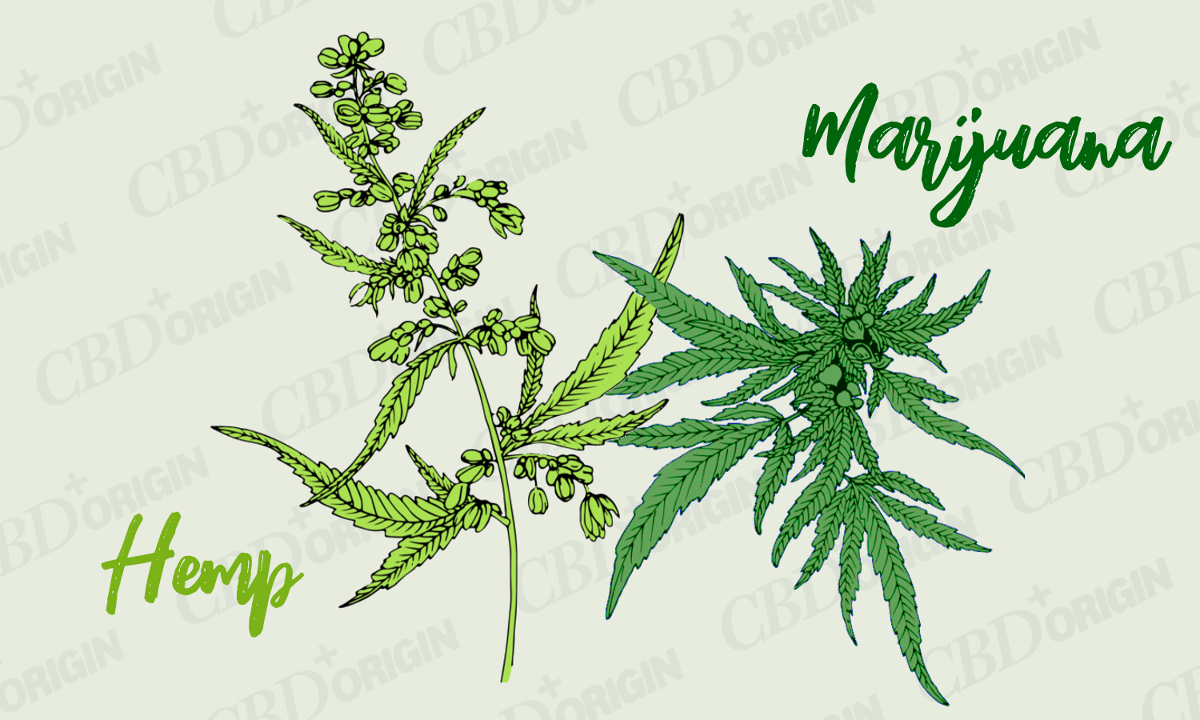
Hemp vs Marijuana: Composition
Cannabis contains a variety of different compounds called Cannabinoids, two of rich, and the most dominant are Tetrahydrocannabinol (THC) and Cannabidiol (CBD).
Both Cannabinoids have shown to provide profound benefits to the human body; however, THC induces psychoactive effects (gets the user “high”), while CBD does not contain any psychoactive properties.
When comparing Hemp vs Marijuana, this is a huge distinction; while Hemp contains a very low concentration of THC (0.3% or less), Marijuana is abundant in THC with concentrations between 15% to 40%.
Because of this, Hemp is grown primarily for industrial purposes, while Marijuana is grown for recreational and medicinal purposes.
Hemp vs Marijuana: Usages
Because Marijuana is abundant in THC, it is naturally grown for its psychoactive properties, whether it be for recreational or medicinal use. Marijuana can be smoked, inhaled, ingested or injected directly into the body. THC is also commonly extracted from the plant and used in a variety of methods including vaporizers, capsules, edibles and more.
Hemp, on the other hand, is primarily used for industrial purposes as it is capable of producing hundreds of crucial resources such as paper, clothing, building materials, biofuel, food products, oils and more. With the fast-growing popularity of CBD across the globe, hemp is also used to produce a wide variety of THC-free CBD products.
Hemp vs Marijuana: Legality
The presence of THC in Hemp vs Marijuana not only plays a huge role in how each plant is used, but it is also the defining factor in the legality of each plant.
Each state/country will have varying laws based on the usage, sales, transportation, and cultivation of Hemp, which will widely depend on the THC-content of the Hemp plant.
In most of the United States, the allowed THC-content for hemp to be classified as legal is 0.3%, while in much of the rest of the world, it is 0.2%.
Because Hemp naturally contains very little THC, it is legal in most parts the world, and where it is not, the legal consequences are minor.
Marijuana is a different story.
Because of its high THC-content, in most parts of the world, including the US, Marijuana is illegal. Seeing the massive economic and medicinal benefits that Marijuana can provide, some countries and states in the US have legalized Marijuana. As the political landscape changes, hopefully, more will follow, but as of now, Marijuana is generally illegal.
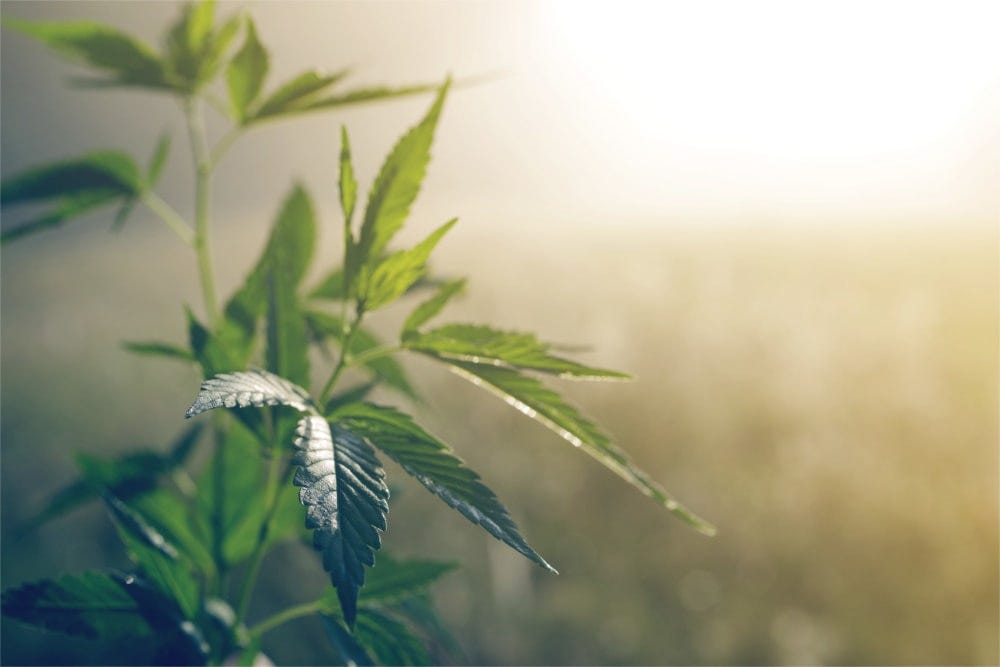
Wrapping It Up…
Now that you’ve finished reading this article, it’s blatantly clear that Hemp and Marijuana are indeed very different plants, and confusing one for the other or both as the same thing is a huge mistake!
Next time you hear a buddy (or anyone for that matter) make that mistake, be sure to educate them on the difference and spread the word about the benefits of each of these amazing plants!
အိမ္နီးျခင္းမွာ စီးပြားျဖစ္ထုတ္ေနၿပီဗ်!
(cc english subtitles available for Thai language section)
The legalization of hemp has been a long time coming for a lot of industries in Thailand, especially the fashion industry. With a lot of heavy regulation still on the cultivation of the plant, clothing designers make due and discuss the use, impact and opportunities of hemp.
(Images in the Video belong to Jimi Hemp).
https://youtu.be/BXkQl9ON5FU
Hemp
A hemp field in Côtes-d'Armor, Brittany, France (Europe's largest hemp producer)
Hemp, or industrial hemp (from Old English hænep),[1] typically found in the northern hemisphere, is a strain of the Cannabis sativa plant species that is grown specifically for the industrial uses of its derived products.[2] It is one of the fastest growing plants[3] and was one of the first plants to be spun into usable fiber 10,000 years ago.[4] It can be refined into a variety of commercial items including paper, textiles, clothing, biodegradable plastics, paint, insulation, biofuel, food, and animal feed.[5][6]
Although cannabis as a drug and industrial hemp both derive from the species Cannabis sativa and contain the psychoactivecomponent tetrahydrocannabinol (THC), they are distinct strainswith unique phytochemical compositions and uses.[7] Hemp has lower concentrations of THC and higher concentrations of cannabidiol (CBD), which decreases or eliminates its psychoactive effects.[7] The legality of industrial hemp varies widely between countries. Some governments regulate the concentration of THC and permit only hemp that is bred with an especially low THC content.[8][9]
Contents
Etymology
The etymology is uncertain but there appears to be no common Proto-Indo-European source for the various forms of the word; the Greek term kánnabis is the oldest attested form, which may have been borrowed from an earlier Scythian or Thracian word.[10][11] Then it appears to have been borrowed into Latin, and separately into Slavic and from there into Baltic, Finnish, and Germanic languages.[12] Following Grimm's law, the "k" would have changed to "h" with the first Germanic sound shift,[10][13] after which it may have been adapted into the Old English form, hænep. However, this theory assumes that hemp was not widely spread among different societies until after it was already being used as a psychoactive drug, which Adams and Mallory (1997) believe to be unlikely based on archaeological evidence.[10] Barber (1991) however, argued that the spread of the name "kannabis" was due to its historically more recent drug use, starting from the south, around Iran, whereas non-THC varieties of hemp are older and prehistoric.[12] Another possible source of origin is Assyrian qunnabu, which was the name for a source of oil, fiber, and medicine in the 1st millennium BC.[12]
Uses
Hemp is used to make a variety of commercial and industrial products including rope, textiles, clothing, shoes, food, paper, bioplastics, insulation, and biofuel.[5] The bast fibers can be used to make textiles that are 100% hemp, but they are commonly blended with other fibers, such as flax, cotton or silk, as well as virgin and recycled polyester, to make woven fabrics for apparel and furnishings. The inner two fibers of the plant are more woody and typically have industrial applications, such as mulch, animal bedding and litter. When oxidized (often erroneously referred to as "drying"), hemp oil from the seeds becomes solid and can be used in the manufacture of oil-based paints, in creams as a moisturizing agent, for cooking, and in plastics. Hemp seeds have been used in bird feed mix as well.[14] A survey in 2003 showed that more than 95% of hemp seed sold in the European Union was used in animal and bird feed.[15]
Food
| Nutritional value per 100 g (3.5 oz) | |
|---|---|
| Energy | 2,451 kJ (586 kcal) |
4.67 g
| |
1.50 g
0.07 g
| |
| Dietary fiber | 4.0 g |
48.75 g
| |
| Saturated | 4.600 g |
| Trans | 0 g |
| Monounsaturated | 5.400 g |
38.100 g
9.301 g
28.698 g
| |
31.56 g
| |
| Tryptophan | 0.369 g |
| Threonine | 1.269 g |
| Isoleucine | 1.286 g |
| Leucine | 2.163 g |
| Lysine | 1.276 g |
| Methionine | 0.933 g |
| Cystine | 0.672 g |
| Phenylalanine | 1.447 g |
| Tyrosine | 1.263 g |
| Valine | 1.777 g |
| Arginine | 4.550 g |
| Histidine | 0.969 g |
| Alanine | 1.528 g |
| Aspartic acid | 3.662 g |
| Glutamic acid | 6.269 g |
| Glycine | 1.611 g |
| Proline | 1.597 g |
| Serine | 1.713 g |
| Vitamins |
Quantity
%DV† |
0%
1 μg
0%
7 μg
| |
| Vitamin A | 11 IU |
| Thiamine (B1) |
111%
1.275 mg
|
| Riboflavin (B2) |
24%
0.285 mg
|
| Niacin (B3) |
61%
9.200 mg
|
| Vitamin B6 |
46%
0.600 mg
|
| Folate (B9) |
28%
110 μg
|
| Vitamin B12 |
0%
0 μg
|
| Vitamin C |
1%
0.5 mg
|
| Vitamin E |
5%
0.80 mg
|
| Minerals |
Quantity
%DV† |
| Calcium |
7%
70 mg
|
| Copper |
80%
1.600 mg
|
| Iron |
61%
7.95 mg
|
| Magnesium |
197%
700 mg
|
| Manganese |
362%
7.600 mg
|
| Phosphorus |
236%
1650 mg
|
| Potassium |
26%
1200 mg
|
| Sodium |
0%
5 mg
|
| Zinc |
104%
9.90 mg
|
| Other constituents | Quantity |
| Water | 4.96 g |
| Cholesterol | 0 mg |
| |
| †Percentages are roughly approximated using US recommendations for adults. | |
Hemp seeds can be eaten raw, ground into hemp meal, sprouted or made into dried sprout powder. Hemp seeds can also be made into a liquid and used for baking or for beverages such as hemp milk and tisanes.[16] Hemp oil is cold-pressed from the seed and is high in unsaturated fatty acids.[17]The leaves of the hemp plant, while not as nutritional as the seeds, are edible and can be consumed raw as leafy vegetables in salads, and pressed to make juice.[18]
In 2011, the U.S. imported $11.5 million worth of hemp products, mostly driven by growth in the demand for hemp seed and hemp oil for use as ingredients in foods such as granola.[19]
In the UK, the Department for Environment, Food and Rural Affairs treats hemp as a purely non-food crop, but with proper licensing and proof of less than 0.2% THC concentration, hemp seeds can be imported for sowing or for sale as a food or food ingredient.[20] In the U.S., imported hemp can be used legally in food products and, as of 2000, was typically sold in health food stores or through mail order.[17]
Nutrition
A 100-gram portion of hulled hemp seeds supplies 586 calories. They contain 5% water, 5% carbohydrates, 49% total fat, and 31% protein. Hemp seeds are notable in providing 64% of the Daily Value (DV) of protein per 100-gram serving.[21] Hemp seeds are a rich source of dietary fiber (20% DV), B vitamins, and the dietary minerals manganese (362% DV), phosphorus(236% DV), magnesium (197% DV), zinc (104% DV), and iron (61% DV). About 73% of the energy in hempseed is in the form of fats and essential fatty acids,[21] mainly polyunsaturated fatty acids, linoleic, oleic, and alpha-linolenic acids.[22]
Hempseed's amino acid profile is comparable to other sources of protein such as meat, milk, eggs and soy.[22] Protein digestibility-corrected amino acid scores (PDCAAS), which attempt to measure the degree to which a food for humans is a "complete protein", were 0.49–0.53 for whole hemp seed, 0.46–0.51 for hempseed meal, and 0.63–0.66 for hulled hempseed.[23]
Storage
Hemp oil oxidizes and turns rancid within a short period of time if not stored properly;[17] its shelf life is extended when it is stored in a dark airtight container and refrigerated. Both light and heat can degrade hemp oil.[24]
Fiber
Hemp fiber has been used extensively throughout history, with production climaxing soon after being introduced to the New World. For centuries, items ranging from rope, to fabrics, to industrial materials were made from hemp fiber. Hemp was also commonly used to make sail canvas. The word "canvas" is derived from the word cannabis.[25][26] Pure hemp has a texture similar to linen.[27]Because of its versatility for use in a variety of products, today hemp is used in a number of consumer goods, including clothing, shoes, accessories, dog collars, and home wares. For clothing, in some instances, hemp is mixed with lyocell.[28]
Building material
Concrete-like blocks made with hemp and lime have been used as an insulating material for construction. Such blocks are not strong enough to be used for structural elements; they must be supported by a brick, wood, or steel frame.[29] However, hemp fibres are extremely strong and durable, and have been shown to be usable as a replacement for wood for many jobs, including creating very durable and breathable homes. The most common use of hemp lime in building is by casting the hemp and lime mix while wet around a timber frame with temporary shuttering, and tamping the mix to form a firm mass; after the removal of the temporary shuttering, the solidified hemp mix is then ready to be plastered with a lime plaster.[30]
The first example of the use of hempcrete was in 1986 in France with the renovation of the Maison de la Turquie in Nogent-sur-Seine by the innovator Charles Rasetti.[31] In the UK hemp lime was first used in 2000 for the construction of two test dwellings in Haverhill.[32] Designed by Modece Architects,[33] who pioneered hemp's use in UK construction, the hemp houses were monitored in comparison with other standard dwellings by BRE. Completed in 2009, the Renewable House is one of the most technologically advanced made from hemp-based materials.[34] The first US home made of hemp-based materials was completed in August 2010 in Asheville, North Carolina.[35]
A panellized system of hemp-lime panels for use in building construction is currently under test in a European Union-funded research collaboration led by the University of Bath. The panels are being designed to assure high-quality construction, rapid on-site erection, optimal hygrothermal performance from day one, and energy- and resource-efficient buildings. The 36-month-long work programme aims to refine product and manufacturing protocols, produce data for certification and marketing, warranty, insurance cover, and availability of finance. It also includes the development of markets in Britain, France, and Spain.[36]
Hemp is used as an internal plaster and is a mixture of hemp hurd (shive) mixed with larger proportions of a lime-based binder. Hemp plaster has insulative qualities.[37]
Plastic and composite materials
A mixture of fiberglass, hemp fiber, kenaf, and flax has been used since 2002 to make composite panels for automobiles.[38] The choice of which bast fiber to use is primarily based on cost and availability. Various car makers are beginning to use hemp in their cars, including Audi, BMW, Ford, GM, Chrysler, Honda, Iveco, Lotus, Mercedes, Mitsubishi, Porsche, Saturn, Volkswagen[39] and Volvo. For example, the Lotus Eco Elise[40] and the Mercedes C-Class both contain hemp (up to 20 kg in each car in the case of the latter).[41]
Paper
Hemp paper are paper varieties consisting exclusively or to a large extent from pulp obtained from fibers of industrial hemp. The products are mainly specialty papers such as cigarette paper,[42]banknotes and technical filter papers.[43] Compared to wood pulp, hemp pulp offers a four to five times longer fibre, a significantly lower lignin fraction as well as a higher tear resistance and tensile strength. However, production costs are about four times higher than for paper from wood,[44] so hemp paper could not be used for mass applications as printing, writing and packaging paper.
Jewelry
Hemp jewelry is the product of knotting hemp twine through the practice of macramé. Hemp jewellery includes bracelets, necklaces, anklets, rings, watches, and other adornments. Some jewellery features beads made from crystals, glass, stone, woodand bones. The hemp twine varies in thickness and comes in a variety of colors. There are many different stitches used to create hemp jewellery, however, the half knot and full knot stitches are most common.
Cordage
Hemp rope was used in the age of sailing ships, though the rope had to be protected by tarring, since hemp rope has a propensity for breaking from rot, as the capillary effect of the rope-woven fibers tended to hold liquid at the interior, while seeming dry from the outside.[45] Tarring was a labor-intensive process, and earned sailors the nickname "Jack Tar". Hemp rope was phased out when manila rope, which does not require tarring, became widely available. Manila is sometimes referred to as Manila hemp, but is not related to hemp; it is abacá, a species of banana.
Animal bedding
Hemp shives are the core of the stem, hemp hurds are broken parts of the core. In the EU, they are used for animal bedding (horses, for instance), or for horticultural mulch.[46] Industrial hemp is much more profitable if both fibers and shives (or even seeds) can be used.
Water and soil purification
Hemp can be used as a "mop crop" to clear impurities out of wastewater, such as sewage effluent, excessive phosphorus from chicken litter, or other unwanted substances or chemicals. Additionally, hemp is being used to clean contaminants at the Chernobyl nuclear disaster site, by way of a process which is known as phytoremediation—the process of clearing radioisotopes and a variety of other toxins from the soil, water, and air.[47]
Weed control
Hemp crops are tall, have thick foliage, and can be planted densely, and thus can be grown as a smother crop to kill tough weeds.[48] Using hemp this way can help farmers avoid the use of herbicides, gain organic certification, and gain the benefits of crop rotation. However, due to the plant's rapid and dense growth characteristics, some jurisdictions consider hemp a prohibited and noxious weed, much like Scotch Broom.[49]
Biofuels
Biodiesel can be made from the oils in hemp seeds and stalks; this product is sometimes called "hempoline".[50] Alcohol fuel (ethanol or, less commonly, methanol) can be made by fermenting the whole plant.
Filtered hemp oil can be used directly to power diesel engines. In 1892, Rudolf Diesel invented the diesel engine, which he intended to power "by a variety of fuels, especially vegetable and seed oils, which earlier were used for oil lamps, i.e. the Argand lamp."[51][52][53]
Processing
Separation of hurd and bast fiber is known as decortication. Traditionally, hemp stalks would be water-retted first before the fibers were beaten off the inner hurd by hand, a process known as scutching. As mechanical technology evolved, separating the fiber from the core was accomplished by crushing rollers and brush rollers, or by hammer-milling, wherein a mechanical hammer mechanism beats the hemp against a screen until hurd, smaller bast fibers, and dust fall through the screen. After the Marijuana Tax Act was implemented in 1938, the technology for separating the fibers from the core remained "frozen in time". Recently, new high-speed kinematic decortication has come about, capable of separating hemp into three streams; bast fiber, hurd, and green microfiber.
Only in 1997, did Ireland, parts of the Commonwealth and other countries begin to legally grow industrial hemp again. Iterations of the 1930s decorticator have been met with limited success, along with steam explosion and chemical processing known as thermomechanical pulping.[citation needed]

.png)



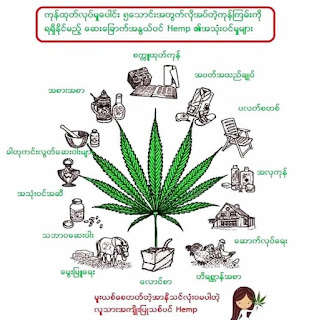



















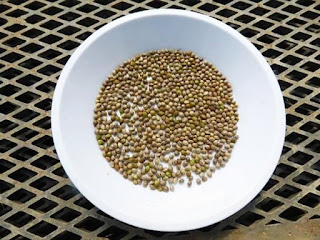










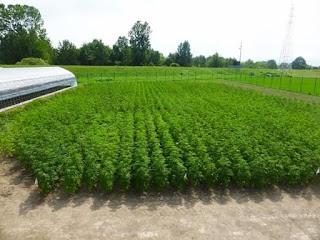
















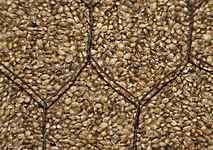

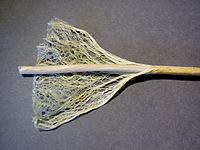




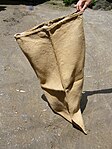





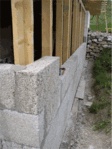



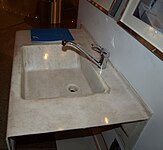

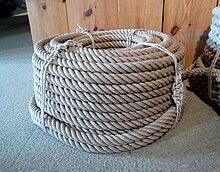
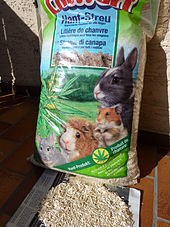
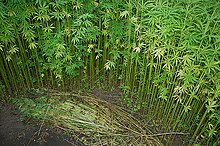
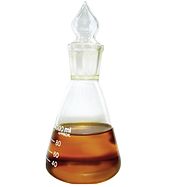
No comments:
Post a Comment